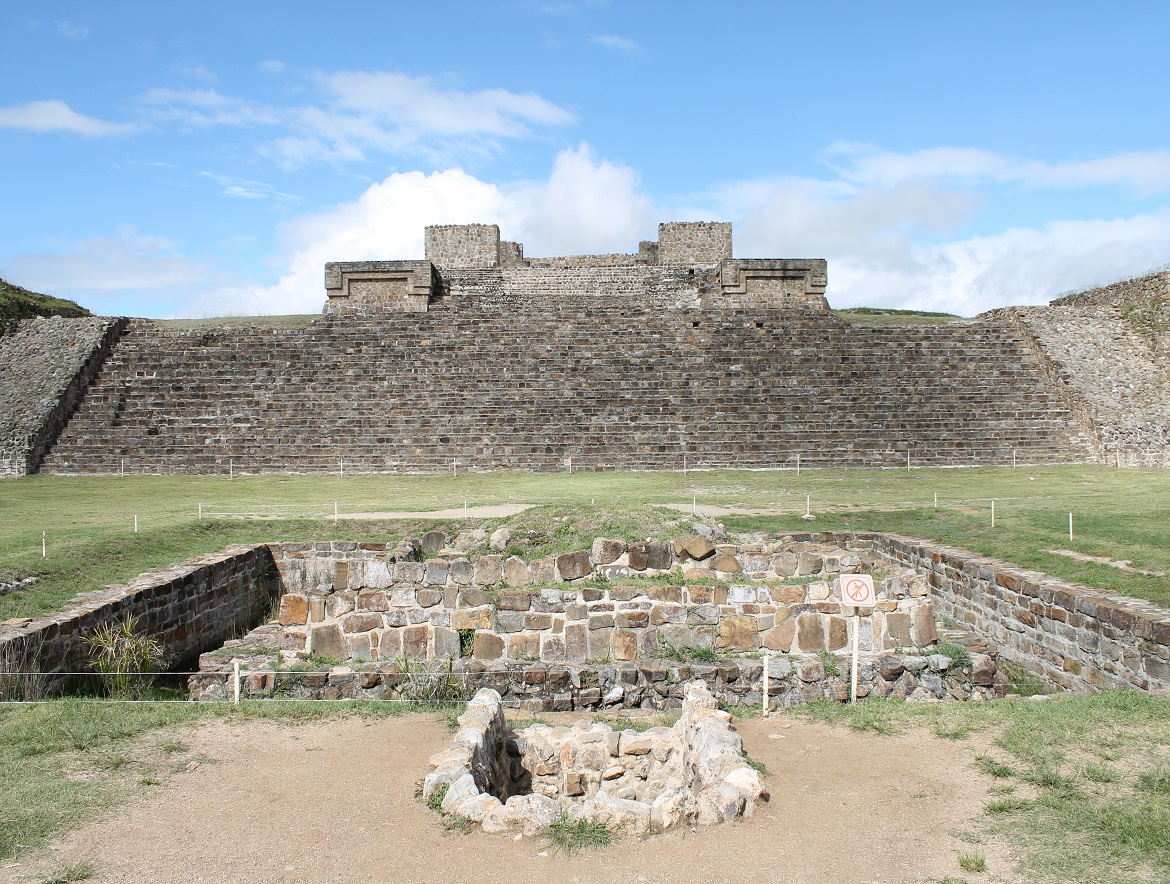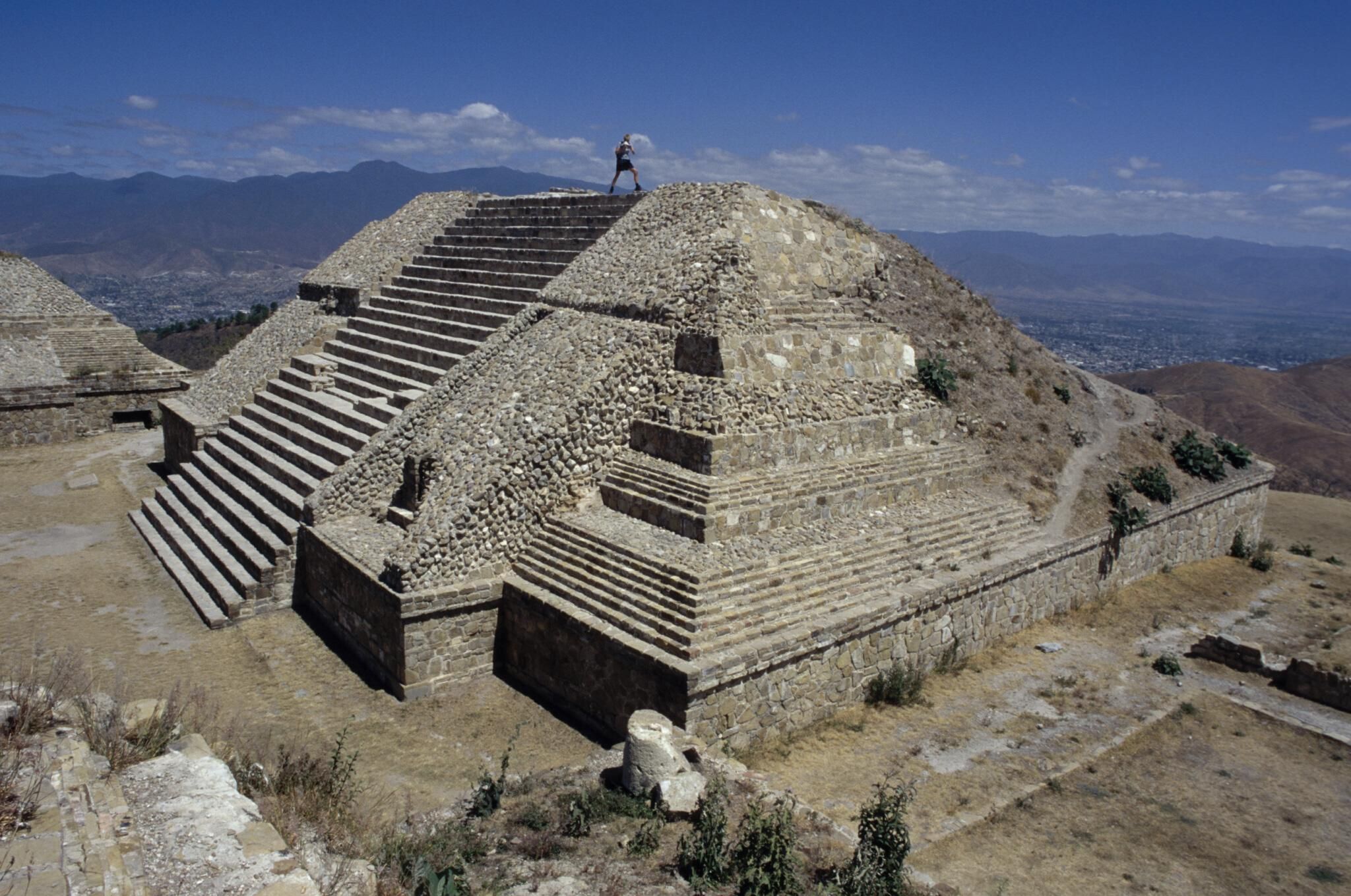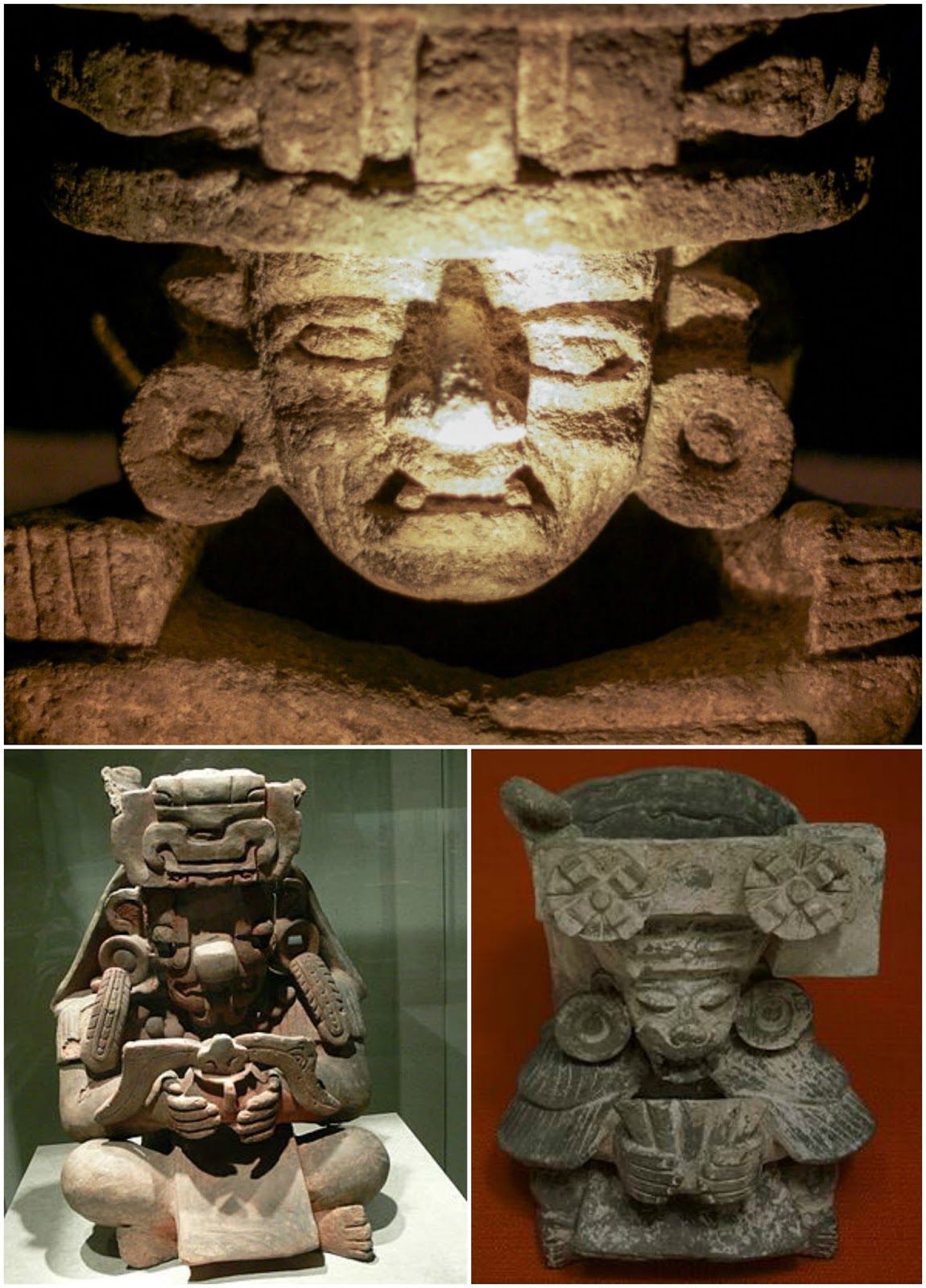During pre-Columbian times, the Zapotecs were one of the most important civilizations in Mesoamerica, also known as the Monte Albán culture; its beginnings were partly influenced by the Olmecs. Through this article, we invite you to learn a little more about The Zapotecs and more.

Zapotec Culture
One of the most advanced civilizations in Mesoamerica during the pre-Columbian period was the Zapotec culture, although its origin is still unclear, the Zapotecs believed that they were descendants of the clouds, therefore, as direct children of the gods, they called themselves themselves the people who live in the clouds or “binni záa”; a nickname that also referred to their settlement in the high mountains. This culture developed between 500 BC and 800 AD, leaving evidence of its progress with great Teotihuacan influence.
The first Zapotec peoples settled in the mountainous regions of the current Mexican state of Oaxaca, and over time they spread to Guerrero, Puebla and the Isthmus of Tehuantepec. Strategically, the Zapotecs selected a hill of prolific territory to build their main headquarters: Monte Albán, which, due to its location 400 meters above the level of the valley and its imposing buildings, manifested its power. Around 750 AD C. the Zapotec culture fell into decline with the Mixtec occupation.
Location of Settlement of the Zapotecs
The Zapotecs settled in the valley of Oaxaca, 200 km south of present-day Mexico City; its main headquarters was Monte Albán, located 10 km from the city of Oaxaca, which was an important place since from there you can see the valleys (a set of three river valleys). The capital had staggered pyramid-shaped structures for sacred buildings, tombs, and markets.
The Zapotecs developed several significant settlements, which were divided into three towns: the valley, the mountains, and the south. They managed to impose themselves on these territories through close productive relations with the Olmec civilization on the southern coast of the Gulf, through the military siege and imprisonment of rival leaders from nearby cities. Around 900 AD C. the Zapotec city of Mitla (in the valley of Oaxaca) became the most important, among other things, for its architecture with ornate buildings arranged around the plazas.
The Zapotecs: Social Organization
As in other pre-Hispanic civilizations, this civilization was represented by a marked social stratification:
- Ruler or Gocquitao: he was the delegate before the gods on the earthly plane and the chief priest.
- Elite: composed of priests, soldiers and merchants, who maintained their power through marriages with the relatives of the rulers of the conquered territories.
- Artisans: specialized in stonework, looms and ceramics.
- Farmers: they administered an advanced irrigation system, which allowed them to produce large amounts of food, such as corn.
Political Organization of the Zapotecs
The Zapotec peoples were characterized by a military development that allowed them to extend their culture, under the command of a religious monarchy. The most significant cities of this civilization were: Monte Albán, Yagul, Teotitlán and Zaachila, which they managed to dominate through commercial ties with neighboring Olmecs, and the military conquest and capture of rival rulers of neighboring cities.
Language
The Zapotec culture practiced a macro language, that is, a language composed of several different dialects that were not understandable between them. This was due to the close trade relations it had with some neighboring cities, such as the Olmecs, Teotihuacans and Mayans.
The Zapotecs created their own method of writing, supported by signs and symbols, carved in stone, buildings and tombs. In addition, they developed a numerical system represented by points and bars, which they outlined in a year of two hundred and sixty days and which would have been the basis of the Mayan and Aztec calendars.
Religion
The Zapotec religion was identified by the fact that the Zapotecs were polytheists, believing that the destiny of man was linked to an animal. According to this, they used to put ashes in the infant's cabin, so that the footprint of a certain animal that will personify the personality of the child. They revered and honored their dead, whom they buried in clay urns and decorated with offerings, then came to build funerary temples. Their main god was Xipe Totec, a kind of Trinity deity composed of:
- totec: the superior god who governed them.
- Xipe: the one that gave rise to everything that does not surround.
- tlatlauhaqui: deity of the sun.
The different gods of the Zapotec culture were associated with natural phenomena, animals or daily life that were represented as follows:
- Cocijo pitao: god of thunder and rain, personified by a mixture of serpent, jaguar and crocodile traits.
- pitao cozobi: deity of young corn, represented with an animal mask, trimmed with details of feathers and ears of corn.
- Coqui Bezelao: deity of death and the underworld.
- Xonaxi Quecuya: manifested itself in earthquakes.
- Pitao Cozana: was the god of the ancestors.
- Picique Zina: Imitated a bat associated with darkness, death, and decapitation rites.
Economy
The economy of this culture and its activity were governed by agronomy, hunting, harvesting, fishing and crafts. They progressed in methods of planting on terraced roofs, which gave them lush harvests of corn, pumpkins, tomatoes and chocolate.
The Zapotec trading system was based on the fact that each household functioned as a productive entity; furthermore, the trade took place in a market, where corn or coffee was used as currency. The commercial links with other cities and, in particular, with the Olmecs that led the Zapotec culture to become the center of the Mesoamerican axis.
Another significant property of the economy of this community is that each nation had an area of economic specialty. In the valley region, pottery and basketry fabrics were produced from different types of vegetable fibers, and leather and cotton fabrics were made towards the north of the sierra.
Functioning of the Zapotec Economy
The Zapotec ethnic group by improving the irrigation and cultivation systems on the slopes of the mountains for beans and corn, as well as the canals on the flat lands to obtain fruits and some vegetables; and what was a small addition to the Zapotec economy became a highly profitable enterprise.
From consumers, they become large producers, which makes it possible to implement another chain of actions, also to a greater degree, such as the exchange of goods that do not originate, as well as marketing, which further developed the Zapotec economic system. . As on the other hand, the Zapotecs operated at the same time an industry of the artisanal type, limited to the production of ceramics and the preparation of fibers for cloth.
These lines plus agriculture on a larger scale even led to the elaboration and use of a metallic copper with the representation of a T. For this reason, we see that the Zapotec economy has fully respected the principles of a true economic system: use of goods, manufacturing of goods, distribution and consequent marketing. Perhaps this accelerated growth, together with climatological factors and weak economic policies, caused the decline of the Zapotec culture in a total collapse of this civilization.
Artistic manifestation
The Zapotec culture had varied cultural expressions, characterized by being very exceptional in different areas, such as:
Architecture
They were distinguished by their stone carving work in low relief as decorative elements of buildings; it was also characterized by the abundant use of mosaics, openwork, planks and murals as decorations. In most of his creations, scenes of war and sacrifice predominated.
The constructions of concise volumes of horizontal type and at right angles, testify to a great mastery in the management of space. In addition, they came to use monolithic columns as supports for flat roofs.
Funerary art
They made intricate funerary constructions with vestibules, chambers and vaults, decorated with murals; Furthermore, they painted the clay urns in different colors such as yellow, blue, white, red and black.
Ceramics
It was of a utilitarian and decorative type for rituals and burials; they used advanced techniques to sculpt vessels with human or animal figures. At first they used a gray clay with a polished finish, later they changed to orange with decorative designs. Clay figurines made with great elegance and the representation of the god Pitao Cocijo also stood out.
Sculptures
The sculptures of this culture, are an additional element of its architecture in lintels, tombs and stelae, they achieved a valuable artistic contribution, differentiated by the incorporation of gods or priests placed as gifts in the tombs.
The maximum word of the Zapotec effigy was personified in the stelae of Los Danzantes, located in the square that bears the same adjective in Monte Albán.
Writing Instruments
The writing displayed by this culture had a particular form for each syllable or term of its language, made up of symbols or hieroglyphs. At the time of writing, they used raw materials such as wood, cloth, paper, fur, and even carved pebbles, shells, bones, and pottery. They usually told stories of everyday life and episodes of war.
Clothing
The costumes used by this Mesoamerican people, before the Spanish arrived in these lands, were reflected in ancient sculptures. We see that the Zapotecs of both sexes used to keep their thorax or bust uncovered, that is, exposed. Where they wore clothing, for light purposes to cover the genital area, it was from the waist down. The men wore the maxtlatl or mastate, a kind of loincloth, and the women the skirt, made of a rustic fiber cloth that they dyed themselves.
There are contradictory opinions in relation to the rest of the aggregates that make up the clothing of the Zapotecs, many emphasize that they lived without shoes and any accessories.
Over the years, other elements will be incorporated into Zapotec attire; Although the loincloth was a fundamental type of dress for men, the combined underpants came to replace them from the XNUMXth century. The women's clothing will be enriched, first with the use of enredos, dyed with natural dyes, as well as rustic and modest huipiles.
The Spanish religious decorum, as well as some guidelines of this humanity, will manage to add other garments to the Zapotec dress. The most finished huipil or bidaani, which consists of a sleeveless square top; therefore, the use of petticoats or bizuudi is performed daily for females. It is assumed that the women who formed the noble class of the Zapotec culture wore much more elaborate clothing, as well as the use of earmuffs and necklaces as adornments.
The conception of matriarchy within Zapotec society, under a more stylized optimum, would inspire women to become conspicuous, especially among those of Isthmian origin, who sought to weave Mesoamerican motifs into Zapotec dress. with those of other foreign cultures.
The Zapotec Calendar
One of the attractive elements of the Zapotec culture is, without a doubt, the observation and calculation of time based on astronomical periods, for this they used two calendars:
- He drinks: it was the religious and ceremonial calendar, which lasted 260 days, spread over 13 months.
- yza: Handled for agricultural and political works, it consisted of 365 days and 18 months based on the solar cycle.
Each month had 20 days and at the end 5 more days to end the year. Although the initiative of the calendar is assigned to the Mayans, it was the Zapotecs who used it before.
Zapotec culture today
Currently, there are still some Zapotec peoples in the valleys of southern Oaxaca and in the Isthmus of Tehuantepec, however, despite professing the Catholic religion, they retain certain practices of their ancestors.
The Zapotec language is part of a legendary history, as it is among the most widely spoken indigenous languages in Mexico. In the main deep-rooted customs, there are several festivities of a religious nature such as:
- Las Velas, is a work full of colors celebrated between May 17 and 24 of each year, rewarding the benefits of different saints in the Catholic Church.
- The Day of the Dead is the main festival of this culture, celebrated for nine days, from October 22 to November 1, which, according to their traditions, death implies a transit to another world.
- Lunes del Cerro, is a celebration that denotes the act of giving, in this sense, the offering consists of dances and songs called Guelaguetza, which are offered to the participants.
Contributions of the Zapotec Culture
The Zapotec culture was influenced by the Olmecs; however, the Zapotec civilization knew how to refine the wisdom gained and achieve a sophisticated elevation in construction, art, printmaking, and industry. Some of the major contributions to later civilizations include:
- Corn as the main product.
- The advanced irrigation system.
- The creation of your own writing system.
- Creating a calendar.
- The creation of a digital system.
If you found this article from Los Zapotecas interesting, we invite you to enjoy these others:




